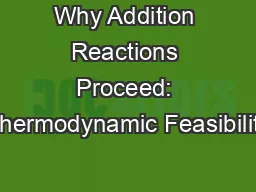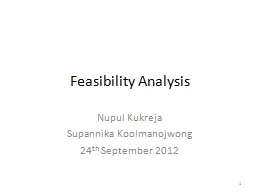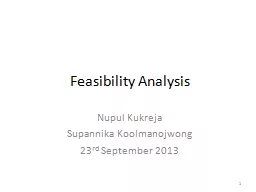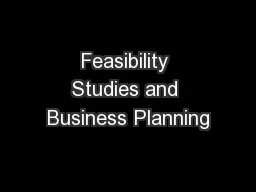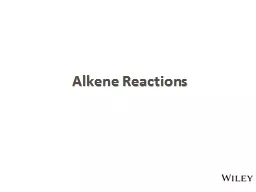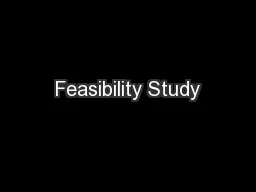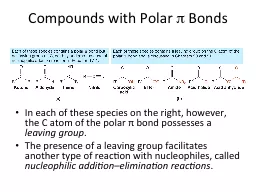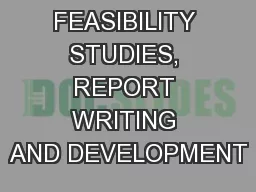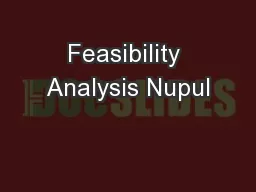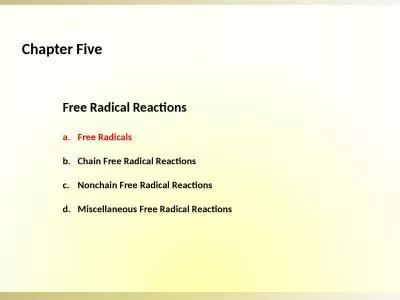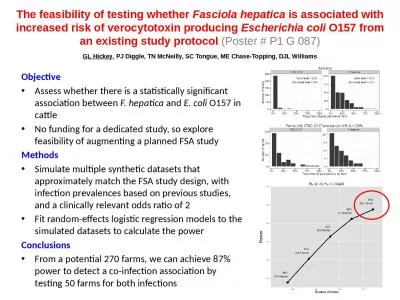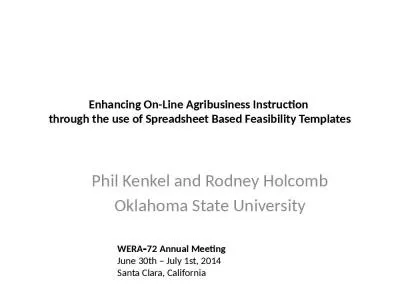PPT-Why Addition Reactions Proceed: Thermodynamic Feasibility
Author : natalia-silvester | Published Date : 2017-06-01
121 Because the CC bond is relatively weak alkene chemistry is dominated by its reactions The addition of a reagent AB to give a saturated compound is the most
Presentation Embed Code
Download Presentation
Download Presentation The PPT/PDF document "Why Addition Reactions Proceed: Thermody..." is the property of its rightful owner. Permission is granted to download and print the materials on this website for personal, non-commercial use only, and to display it on your personal computer provided you do not modify the materials and that you retain all copyright notices contained in the materials. By downloading content from our website, you accept the terms of this agreement.
Why Addition Reactions Proceed: Thermodynamic Feasibility: Transcript
Download Rules Of Document
"Why Addition Reactions Proceed: Thermodynamic Feasibility"The content belongs to its owner. You may download and print it for personal use, without modification, and keep all copyright notices. By downloading, you agree to these terms.
Related Documents

